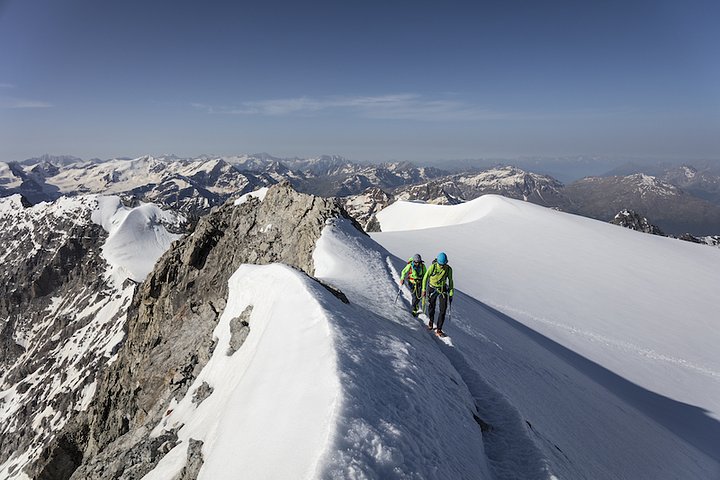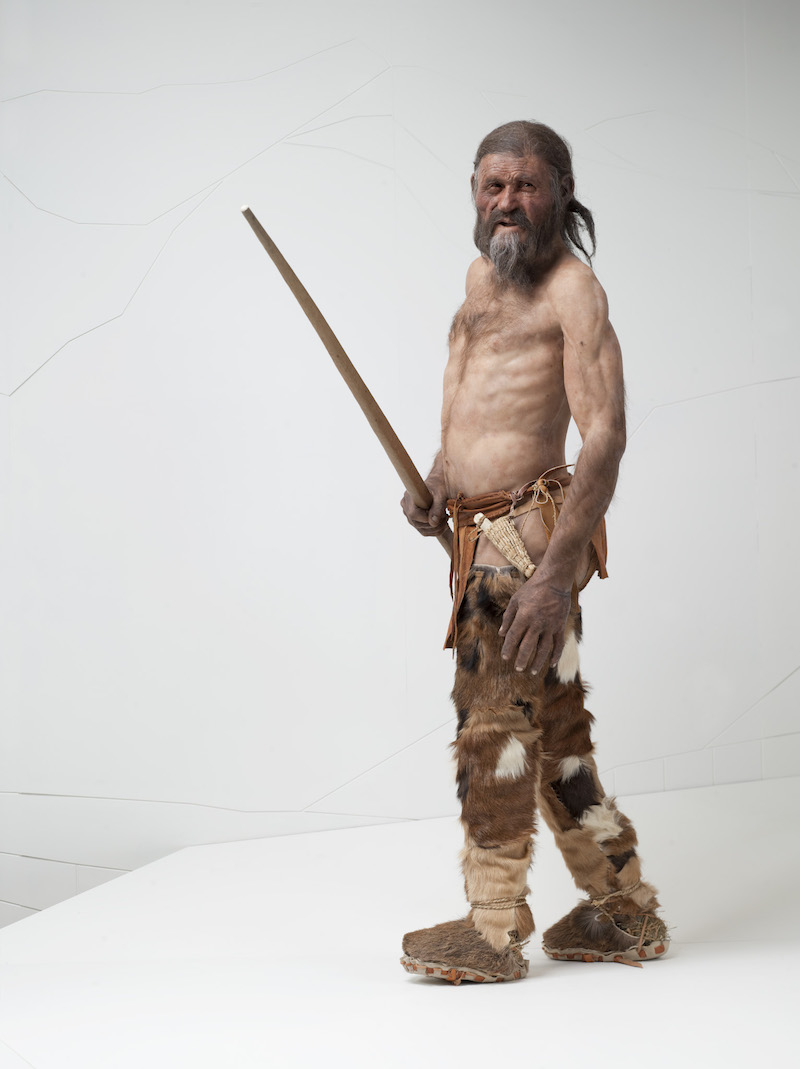Hiking in the Ötztal Alps means undertaking a journey back to 5,300 years ago. Especially in the Similaun Glacier in Venoste Alps (Ötztaler Alpen in German). The famous Ötztal Alps, among the largest mountain groups in the Eastern Alps, lie between North Tyrol and South Tyrol. Along the Senales Ridge the 3,599-meter high Similaun Glacier rises, exactly on the border between Austria and Italy.
Similaun is best known thanks to Ötzi, the Iceman, who was found in 1991 at Giogo di Tisa/Hauslabjoch at 3,210 meters above sea level. Because the site lies exactly on the border, it was not clear exactly what status the mummy should be given. Nowadays, Ötzi can be visited at the South Tyrol Museum of Archaeology in Bolzano, and a large obelisk is located at the Giogo di Tisa.
We are fascinated by the story of the mummy who came from the ice and lived in the Copper Age: scientists have discovered so much over the years, but so many secrets are still hidden.
Before embarking on a Ötzi Glacier tour and while hiking in the Ötztal Alps, you should get to know at least 5 facts about this terrific finding.
Ötzi was found by two mountaineers while hiking in the Ötztal Alps
Ötzi's mummified body was discovered on September 19, 1991, by a German couple Helmut and Erika Simon while hiking in the Ötztal Alps. The mountaineer couple was at the Giogo di Tisa at 3,210 meters above sea level, on the Val Senales glacier not far from the Similaun hut. Ötzi was crossing the Hauslabjoch that connects the Vernago valley and the Hochjochferner glacier.
Ötzi lived 5,300 years ago!
The mountaineers couple thought to have bumped into a missing hiker. But it was then clear that the body belonged to long time ago. The body was sent to Austria and was examined by Konrad Spindler, a prehistory expert at the University of Innsbruck, who without hesitation said that the man must have died at least 4,000 years earlier. Along with the body, remains of animal skin, fur, ropes, a dagger and a bow (initially mistaken for a long stick) were also found. He approximately lived 5,300 years ago and was preserved by the ice.
Tattoos were also in fashion at the time
Ötzi's mummy holds a fine collection of Copper Age tattoos. He has 50 in all, from head to toe. They were not done with a needle, but by applying small cuts to the skin which were then rubbed with charcoal. The result was a series of lines and crosses, most of them located in parts of the body most prone to injury, such as the joints and along the back. A fact that led some academics to believe that the tattoos were actually the points targeted by acupuncture practices.
Still relatives around?
A recent genetic study has revealed the existence of at least 19 genetic relatives of the Iceman living in the Austrian Tyrol. Researchers discovered this by looking at specific genetic markers found on Ötzi's male sex chromosome.
Ötzi is a real star
In Hollywood, Ötzi has inspired really cool tattoos, such as that of Brad Pitt, who had the profile of the Similaun mummy tattooed on his arm, and has even conquered the American press: in October 1992 the famous Time magazine dedicated its cover to him, as to a real star. In Val Senales, Ötzi is also an absolute protagonist: this is where Felix Randau's film "Iceman," starring Jürgen Vogel in the title role, was filmed in 2017.

Hiking in the Ötztal Alps will lead you through this amazing history, one step at a time! Join us in our Ötzi Glacier Tour
| You may also like: Marmolada Glacier, the Queen of the Dolomites |

